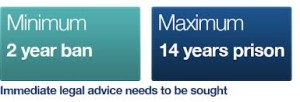Helping to pass your Driving Test in Newcastle.
By Rick Kelsey
Newsbeat reporter
Radical plans to change the driving test have been put on hold by the government.
The Department for Transport says it doesn’t want to restrict the lives of young people but road safety campaigners have accused them of being scared.
A Green Paper outlining stricter rules for drivers under 30 was supposed to be released last year.
It would have meant new young drivers getting a probationary licence.
During that 12-month probation there would be a curfew between 10 at night and five in the morning, unless someone else over 30 was in the car.
Learners would be tested on motorway driving and there would be a ban on all mobile phone use behind the wheel and a lower legal alcohol limit.
The idea was to cut the amount of accidents involving young people.
Department for Transport statistics show that more than a fifth of deaths on British roads in 2012 involved drivers aged 17-24.
Sophie Morgan, 29, was paralysed from the waist down after the car she was driving was involved in an accident after the end of her A-levels in 2003.
Sophie Morgan wants the government to change the rules for learning to drive
She says she is disappointed the government is going back on plans to make learner drivers do a minimum number of hours behind the wheel.
“I don’t know how many more young people have to die or sustain serious life-changing injuries like mine before the government does something,” she says.
Ministers were due to publish a green paper last year after considering the Transport Research Laboratory’s report which suggested a new system could cut casualty rates.
We are wrestling with how to make things safer, while not unduly restricting the freedom of our young people
Department for Transport spokesman
“The safety of young people on our roads is very important to us,” a Department for Transport spokesman said. “Too many young people die, too often.
“We are wrestling with how to make things safer, while not unduly restricting the freedom of our young people.
“We want young people to be able to get to work and training, to education and to leisure activities, and we want them to do so safely.
“We are finding this a difficult balance, with passionate voices on both sides. ”
Overall, the number of people dying on British roads has halved in the last 10 years.
In 2012, 24,793 people were killed or seriously injured on British roads, according to Department for Transport figures.
The report suggested that implementing the new system could cut annual casualty numbers by 4,471 and save £224m.
The Institute of Advanced Motorists has told Newsbeat that it is disappointed with the delay.
Director of policy and research Neil Greig said: “Government has copped out due to fears that a new system will add to cost for young people and limit their job opportunities.
“Road deaths cost the economy almost £16 billion a year so improving safety for the highest risk group would actually have helped the economy.
“Young drivers need help. Graduated driver licensing could deliver that.”
Driving instructor Ryan Collin, 28, is a driving instructor with the AA in rural Berkshire
Some drivers thought the plans were too restrictive.
Jay Singh, 21, is in a band and finishes late at night.
He said: “I’m really pleased that I’m not going to be limited by these rules that have just appeared really.”
Some restrictions are a good idea but the ones they were proposing just wouldn’t work
Ryan Collins, Driving instructor in Berkshire
He added that he would not be able to learn under the proposals because of the extra number of hours that would have been needed before taking the test.
“Considering I’m a student and my income is nothing but loan from student finance, I just wouldn’t be able to afford it.”
One of the main concerns with the proposals was how they would affect young people in rural areas when it comes to working and training.
Ryan Collins is a driving instructor in Berkshire.
“Some restrictions are a good idea but the ones they were proposing just wouldn’t work,” he said.
He says he would have liked to have seen motorway training in the changes.
“A lot of people think they pass their test and they are a good driver,” he said.
“I think additional training at the highest speeds, like on motorways, would help.”
The AA motoring group says it is disappointed that a paper was not published but has also expressed some relief.
A statement read: “We are generally in favour of education over restriction.
“At the radical end of some of the restrictions proposed, there would be a significant impact on young people’s freedom.”
In Northern Ireland there have already been some moves towards bringing in graduated licencing.
Earlier this month Stormont environment minister Mark H Durkan said: “Radical measures are necessary if we are to pursue an ambition of zero road death.”
The Driving Instructors Association in Northern Ireland says it is unhappy with the changes.


